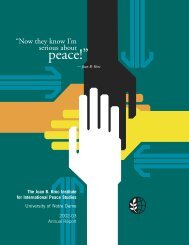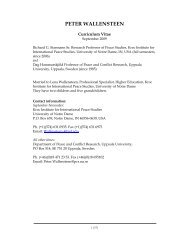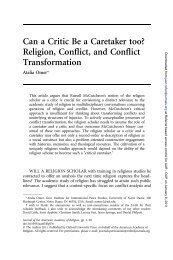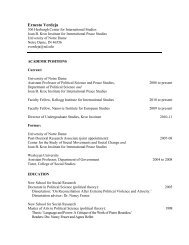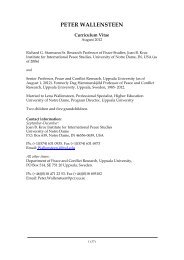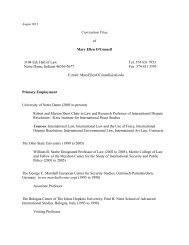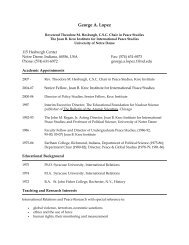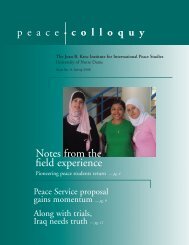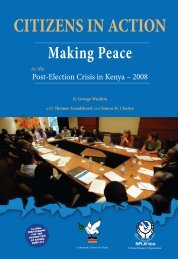Somalia: Creating Space for Fresh Approaches to Peacebuilding
Somalia: Creating Space for Fresh Approaches to Peacebuilding
Somalia: Creating Space for Fresh Approaches to Peacebuilding
Create successful ePaper yourself
Turn your PDF publications into a flip-book with our unique Google optimized e-Paper software.
jessica brandwein<br />
52<br />
Impact of international media in <strong>Somalia</strong><br />
Jessica Brandwein<br />
Executive summary<br />
The media has chosen <strong>to</strong> emphasize different aspects of the Somali situation,<br />
including the civil war, international interventions, humanitarian crises, failed<br />
peace agreements, piracy, and terrorism. These distinct ways in which the international<br />
media frames <strong>Somalia</strong> shapes both the way the international community<br />
understands the conflict, and the range of responses that international ac<strong>to</strong>rs consider.<br />
Through a cursory comparison of African and Western media sources, this<br />
paper finds that Western media tends <strong>to</strong> frame <strong>Somalia</strong> in terms of terrorism, a<br />
humanitarian crisis or a civil war, with little focus on peace negotiations and local<br />
human interest s<strong>to</strong>ries or pragmatic local realities.<br />
This media focus con<strong>for</strong>ms <strong>to</strong> the US government’s view of <strong>Somalia</strong> as a<br />
breeding ground <strong>for</strong> terrorists, legitimizing US policies of military intervention<br />
in <strong>Somalia</strong>, while simultaneously justifying the lack of meaningful engagement<br />
in the country on peacebuilding issues. While African media sources are more<br />
likely <strong>to</strong> highlight peace talks and local peace and regional security initiatives,<br />
nonetheless, both sources rein<strong>for</strong>ce the one sided portrayal of al-Shabaab, providing<br />
little space <strong>for</strong> alternative narratives that would legitimize and support local<br />
peacebuilding engagement with the insurgent group. This paper provides a descriptive<br />
account of these frames over time, and hypothesizes the effects of these<br />
frames on local and international ef<strong>for</strong>ts at peacebuilding.<br />
Different media perspectives on <strong>Somalia</strong><br />
Over the past 20 years, the international media has covered <strong>Somalia</strong> from several<br />
different angles, while at the same time maintaining a continuously dismal outlook<br />
on the prospects <strong>for</strong> peace and security in the country. At various times the<br />
media has chosen <strong>to</strong> emphasize different aspects of the Somali situation, including<br />
the civil war, international interventions, humanitarian crises, failed peace<br />
agreements, piracy, and terrorism. These distinct ways in which the international<br />
media frames <strong>Somalia</strong> shapes both the way the international community understands<br />
the conflict and the range of responses that it considers.<br />
Media and conflict<br />
The relevant literature on media and conflict generally poses two separate sets of<br />
questions: 1) How does media influence policy decisions <strong>to</strong> intervene in a conflict<br />
militarily or otherwise? How does it influence, mobilize and legitimize support<br />
<strong>for</strong> intervention? 2) Is journalism conducted with a peaceful bias that allows<br />
space <strong>for</strong> constructive conflict resolution and trans<strong>for</strong>mation, or with a war bias<br />
that concentrates on the violent aspects of the conflict?



